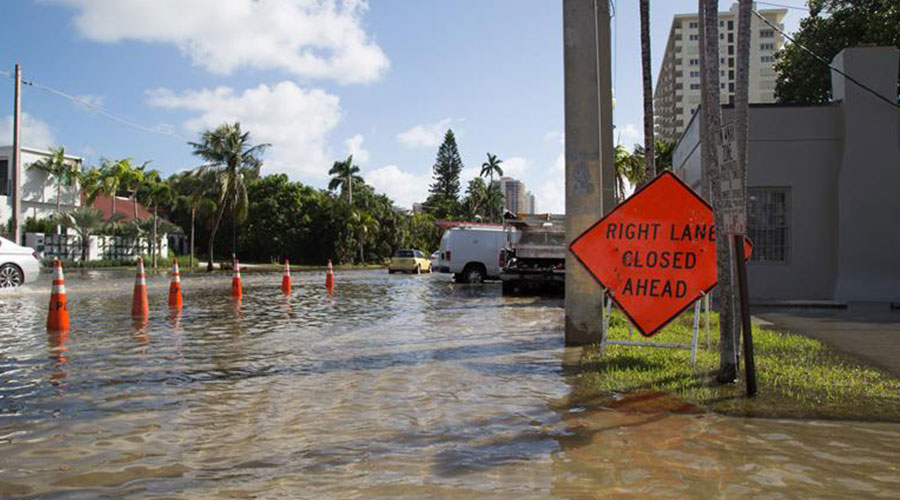Orange County Public Schools in Florida Emphasizes Emergency Management
Orange County Public Schools prioritizes emergency management for every situation.
By Ronnie Wendt, Contributing Writer
Loubert “Lou” Alexis does not just talk about school safety. He lives it.
To Alexis, director of the office of emergency management for Orange County, Florida, Public Schools, the words safety and security are a starting point, not an end. He has seen too many schools rely on a checklist mentality — doors locked, drills conducted, cameras installed — and call it a day.
“Many schools lack a structured approach to emergency management, a discipline that emphasizes not just protection, but coordination, planning, and resilience,” Alexis says.
He says he is not interested in running an office that just responds. He is here to lead one that is ready.
Since joining the district in 2019 as assistant director of emergency preparedness, Alexis has taken the district’s emergency management from a basic function to a robust, fully developed program. His vision has been to create a system where emergency management goes beyond planning to making sure a plan is in place that actually works.
“Safety and security are important,” he says. “But emergency management is about coordination. It’s about knowing where to get resources, bringing people together and building relationships.”
Under Alexis’s leadership, the district has become a model for K-12 emergency management in Florida and beyond. The district has earned Storm-Ready Recognition from the National Weather Service, established an emergency management internship program with the University of Central Florida, launched districtwide preparedness days and completed a district reunification plan, which has been adopted by the school board.
For Alexis, the recognitions validate a successful system and a well-prepared team.
“Emergency management is not just about having drills,” he says. “It’s about having a clear strategy of who is in charge, what steps to take and how to evaluate success.”
Building a preparedness culture
Central to the district’s successful approach to emergency management is the concept of a whole community model of preparedness. Rather than develop plans in isolation, Alexis says he ensures all stakeholders — including principals, district departments, district leadership and local first responders — are involved.
“If you’re not part of the planning process and you have a response role, your understanding of the plan will be limited,” he says, adding that by including stakeholders, resulting plans are practical, effective and tailored to each school’s unique challenges.
Stakeholders are part of the process, from threat hazard analysis to plan development and practice.
“To prepare appropriately, you need to know what your threats are,” he says.
Alexis stresses that each school faces unique threats, and those parties connected to each school know best what those risks are. For instance, some schools are near industrial sites, airports or major highways and, as a result, must plan for potential hazards relating to those locations.
“We also plan for severe weather, wildfires, hurricanes and their impacts,” he says. “And of course, we look at active assailant threats.”
Threats are ranked. Then subject matter experts help create and present emergency plans to district leadership for review and feedback, Alexis says.
Adapting and evolving
Preparedness is not static. Emergency management plans must be living documents that are reviewed, tested and updated regularly, Alexis says. Orange County Public Schools conducts annual reviews and a comprehensive review every five years.
But there are parts within the plans, which exist in digital and pdf form, where managers can update plans for specific hazards as needed.
“If we find a best practice, we will update the plan,” he says. “We do not wait five years to do that.”
Training is another cornerstone that can lead to plan revisions. Through regular drills, tabletop exercises and full-scale simulations, Alexis and his team rehearse their responses to scenarios ranging from active assailant attacks to natural disasters. After these exercises, the office gathers feedback and analyzes performance to continuously improve its strategies, he says.
Planning preparedness days
As schools gear up for a new academic year, the district’s office of emergency management hosts preparedness days, a comprehensive two-day conference designed to equip school officials with essential safety and emergency management skills.
The training allows district administrators, principals, assistant principals and leaders to learn emergency management skills from outside experts. For instance, the district brings in the FBI to educate staff on human trafficking — a key concern in Florida.
“We partner with the Orange County Sheriff’s Office, Orlando (police department) and their respective fire departments so they can share how staff can help them and what to expect when they arrive on campus,” he says. “Orlando Health came in to do CPR, AED and bleeding control training.”
The conference happens during the summer, he says, because “during the school year, everyone is very busy,” he says.
A two-year active assailant exercise culminated in a reunification exercise involving student participation and bus transportation to the designated reunification site for families and students.
“This allowed us to test and see if our reunification plan worked,” he says. “The plan is being revised to reflect lessons learned and best practices. Our goal is to eventually involve parents in reunification training so that they can feel confident in our reunification efforts should something happen.”
Whenever students are involved, the district makes sure the exercises and drills are age appropriate.
“What works for an elementary student will not work at the high school level and vice versa,” he says. “For our preparedness days event, we used some of our drama and JROTC students to participate in the reunification portion of exercises. During the active assailant exercise, we do not use students.”
Mental health and psychological professionals evaluate all exercises involving students to ensure they comply with state law and consider the children’s mental health and the impact the exercise could have.
Leveraging technology
Alexis says he and his team leverage advanced technology to streamline emergency management.
They use WebEOC, an incident management platform that tracks incidents, sends mission requests and coordinates responses across departments. Smartsheet, a project management platform, aids in tracking drills, training and safe school plans by providing real-time dashboards that ensure compliance.
Alexis says the tool helps the district track every safety drill. When a principal submits a drill and training, Alexis’ team sees it on a dashboard to ensure they comply with drills and training requirements.
Smartsheet also is designed to aid school administrators in creating their required safe school plans. It prompts users to answer questions such as, if something happened at your school:
- What is the first location you would evacuate to?
- Who is part of your emergency response team?
- What are the resources you have available?
- Where is your safety equipment located?
- How many students are enrolled?
- How many bus riders and walkers?
- Who has access and functional needs?
“When emergency personnel arrive, we can hand this plan to them so that they know information about the student population, and where they can find things on campus,” he says.
The district’s office of emergency management uses the district’s strategic plan as a guide and has its own plan that supports those objectives. The office also tracks new and updated state laws impacting drill procedures and emergency planning.
The office also maintains an emergency coordination center to coordinate responses to incidents and disasters impacting the district. Its staff consists of certified emergency managers certified through the Florida Emergency Preparedness Association.
“Those are drivers for what we do as a school district, but honestly, we often go beyond those things,” he says. “For example, prior to 2022, there was no law that required us to develop a reunification plan. There’s no law that said we had to have emergency response teams. These are things we believed to be a best practice, so we had them in place.”
The district plans to take another step that is not required, he says. They’re retrofitting a school bus to haul reunification equipment and supplies, which is a cheaper option than the original plan to buy trailers.
Seizing opportunity
When an emergency occurs, it can be a moment of chaos, but it is also an opportunity. Alexis says school districts can recognize these moments and act decisively.
“For example, when a major hurricane hits, resources may become available,” Alexis says. “Grants, emergency funds and specialized support can be accessed. But beyond just acquiring resources, it’s an opportunity to reevaluate your processes and improve how you prepare for future incidents.”
Effective emergency preparedness also begins with strong leadership commitment.
“You must have buy-in from the administration, the school board and the district superintendent,” he says. “Their support ensures that preparedness isn’t just a policy. It’s a priority.”
Alexis also says districts need to begin with practical, achievable actions.
“Start with the low-hanging fruit,” he says. “Identify improvements you can make now and who can help you achieve them. Build on that foundation step by step.”
Preparedness is not just about having the right resources. It also requires managers to have the right connections. Alexis says managers need to collaborate with local emergency and public safety personnel before they are needed.
“Know who they are, understand how they respond, and establish those relationships early,” he says. “In a crisis, knowing who to call can be just as important as knowing what to do.”
Through this approach, the office of emergency management has ensured that the district not only reacts to crises but prepares for them. The approach driven by technology, training and a commitment to emergency management has made the district a leader in school emergency management.
“Preparedness is about peace of mind,” Alexis says. “When everyone knows their role and is trained to respond, we’re not just protecting schools. We are protecting lives.”
Ronnie Wendt is a freelance writer based in Minocqua, Wisconsin.
Related Topics:











